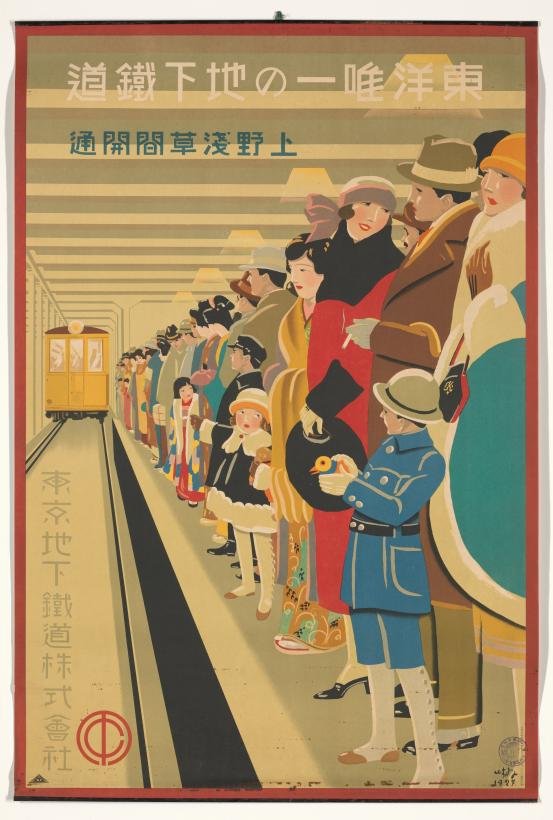
(Nagai, 1980)
‘Poster design for change’ - inspired by 20th-century Japanese graphic design
‘Poster Design for Change’ is a progressive and exciting learning resource provided by the National Gallery of Victoria (NGV) that introduces students to the “formal qualities and messages of twentieth-century Japanese graphic design works” (NGV, 2023). Through analysing these artworks and interpreting their intentions and values, students will work to develop their own poster designs that either advocate for change or encounters a change that they believe would have a positive impact on our world and society.
I was drawn to this resource because I admire the stylistic conventions of Japanese poster design and I believe that this resource provides a meaningful opportunity for students to learn about the Japanese culture and art conventions that have influenced modern design activism. Japanese poster design has some minimalistic but vibrant stylistic qualities that I believe could inspire creativity and some insightful poster ideas, and I believe that learning through various artworks that engage with culture, styles, and the ideologies of certain time periods would be highly interesting to students and beneficial towards their understanding of art and its important connection to culture.
Part of the reason why I found an interest in this resource is because the webpage clearly outlines the learning objectives and provides workshop instructions that are broken into sections, making it easy for educators to see the progression of the task.
Within the first section ‘discuss’, students are prompted to interact with historical Japanese poster designs and are asked to elaborate on the intentions and stylistic principles of each. Followed by this in the section ‘create’, students use their newfound knowledge to develop their own graphic poster design for change. The last section prompts students to reflect upon the impact of their activism poster and discuss whether it was effective in expressing their ideas and intentions, clearly mirroring the aims of the Making and Responding strands within the Australian Curriculum’s learning structure.
Student examples:
References:
(NGV, 2023)
Nagai, K. (1980). Im here. Save being, save world. [Colour screenprint]. National Gallery of Victoria (NGV). https://www.ngv.vic.gov.au/school_resource/poster-design-for-change-inspired-by-twentieth-century-japanese-graphic-design/
Hisui, S. (1927). The first Subway in Asia. [Colour Lithograph]. National Gallery of Victoria (NGV). https://www.ngv.vic.gov.au/school_resource/poster-design-for-change-inspired-by-twentieth-century-japanese-graphic-design/
National Gallery of Victoria (NGV). (2023). Poster Design for Change – Inspired by Twentieth Century Japanese Graphic Design. https://www.ngv.vic.gov.au/school_resource/poster-design-for-change-inspired-by-twentieth-century-japanese-graphic-design/
Australian Curriculum, Assessment and Reporting Authority (ACARA). (2010). Visual Arts F-10 Curriculum. https://www.australiancurriculum.edu.au/f-10-curriculum/the-arts/visual-arts/
(Hisui, 1927)
(NGV, 2023)
In line with the Australian curriculum’s year 7 and 8 bands, this resource comfortably aligns with the content descriptor (ACAVAM122), where students are required to “present artwork demonstrating consideration of how the artwork is displayed to enhance the artist’s intention to an audience” (ACARA, 2010). The resource task encourages students to apply ethical and environmental considerations when developing their poster design, asks students to justify their creative choices and intentions for ‘change’, and prompts students to reflect on their new knowledge of Japanese culture and place while considering links between contemporary and traditional activism (ACARA, 2010). ‘Poster Design for Change’ engages students in critical and creative thinking, explores personal and social capabilities, and provides engagement with Asian culture and global implications (ACARA, 2010).
For teachers, the resource is accompanied by impactful questioning strategies to encourage students to reflect, inquire, and gain new cultural understandings. This rich and thoughtful resource could be implemented across a few lessons or could be used to establish a larger project that has multiple components.





